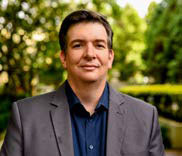
3 minute read
Building the virtuous health cycle: diagnostics capacity building
By Jonathan Keytel , Roche Diagnostics Head of Healthcare Transformation
We all have an anecdote where diagnostics have taken centre stage. A seemingly simple blood test can give families hope and peace of mind. But in Africa, many stories don’t have the happy endings they should. Africa currently has, on average, one pathologist per one-million people.
Advertisement
Healthcare providers can drive capacity building on a large scale. But in many cases, clinical processes are further advanced than laboratory processes because pathologists don’t have the resources or training to implement them effectively. Here, an essential part of the healthcare cycle is underperforming and not serving patients as it should.
The virtuous cycle – a case study in progress
In July 2022, the Kilimanjaro Christian Medical Centre (KCMC), Philipps-University Marburg and Roche Diagnostics launched a strategic partnership.
The central objective of the partnership is to strengthen diagnostics infrastructure and capacity in north-eastern Tanzania by creating a state-of-the-art Centre of Excellence. The Centre is designed to drive sustainable capacity building and develop the skill sets necessary to meet local needs. This Centre of Excellence is co-funded by the Deutsche Investitions-und Entwicklungsgesellschaft (DEG), a development finance provider from the German Federal Ministry for Economic Cooperation and Development, and Roche Diagnostics.
The COVID pandemic highlighted that we need to invest more energy and effort in diagnostics to create a virtuous, uninterrupted cycle that delivers better outcomes to clinicians and patients.
In the context of this case study, this plays out at three levels. At one end is an academic partner from Europe that brings high-tech systems. At the other end is a leading and respected Tanzanian institution that encompasses the African context.
Roche Diagnostics brings expertise and essential diagnostic tools as a private partner. This creates a virtuous cycle in that the sum of these parts creates better outcomes – for patients, for hardworking clinicians, and the strategic partners involved.
The Centre will merge three laboratories already run at the facility – the clinical laboratory, the teaching laboratory and the research laboratory. This consolidates three testing streams, building a virtuous cycle of expertise.
Testing is more cost-effective when it is done in batches. The downside to batching is that the lab might have to wait several days before they have enough samples to run the test. So the doctor and patient wait longer for their results.
If the clinician is confident in the quality of results they are receiving from the lab, they feel more engaged in the process and are more likely to send bigger batches of tests. This drives faster output for the patient and the clinician.
These interlocking virtuous cycles ensure that the lab is operationally, financially and socially sustainable. The lab becomes a sustainable service provider in the clinical setting, shaping diagnostic capacity organically. We can also expand the lab’s reach with digital technology and telemedicine, allowing it to operate across borders and tap into diagnostic expertise from around the globe.
As businesses with the power to invest, we are investing in a virtuous cycle that equilaterally serves the investors, the laboratory, the clinicians and, most importantly, the patient. By doing now what the patient needs next, more families could get the happy endings they deserve in their healthcare journeys than ever before.










